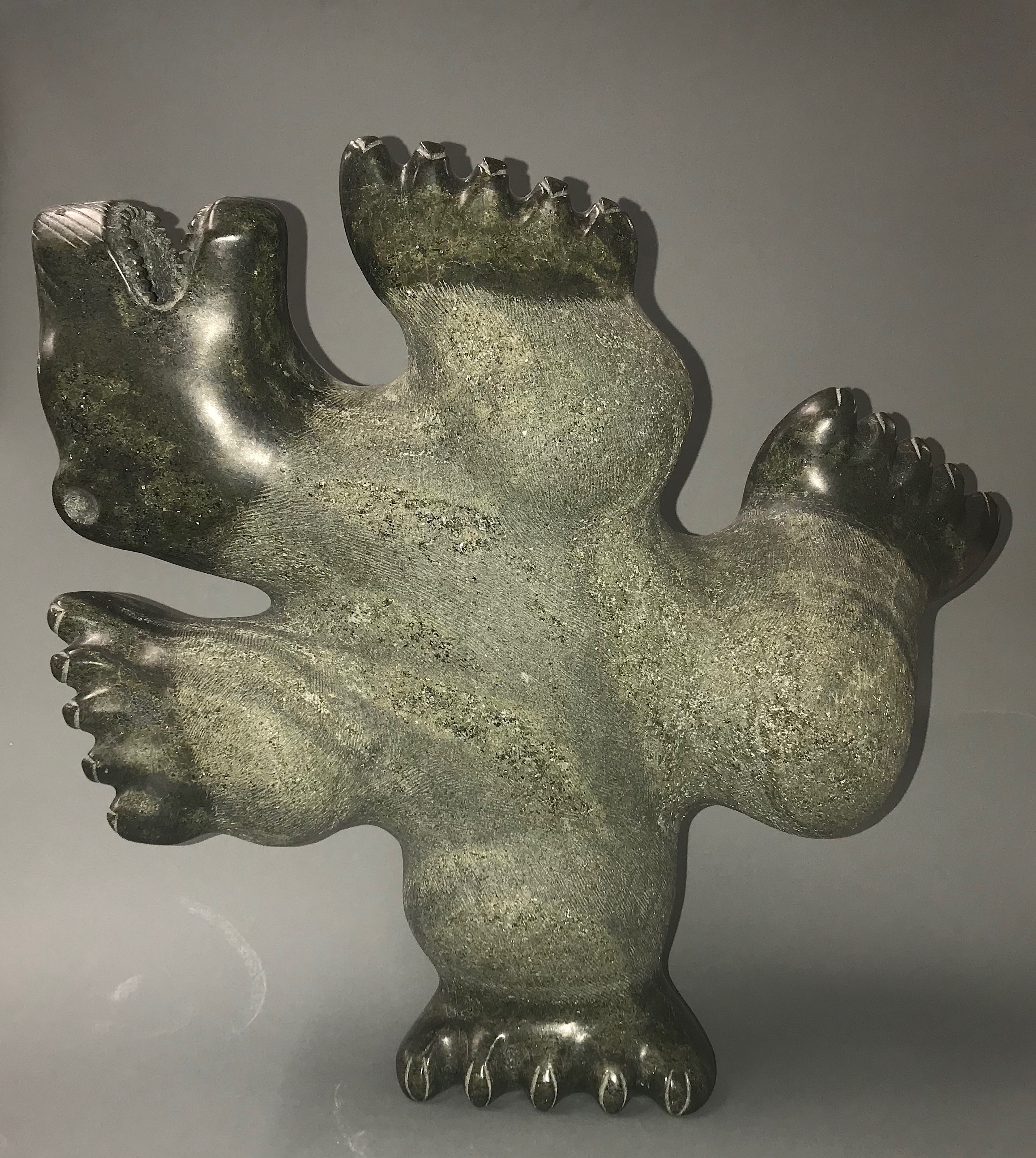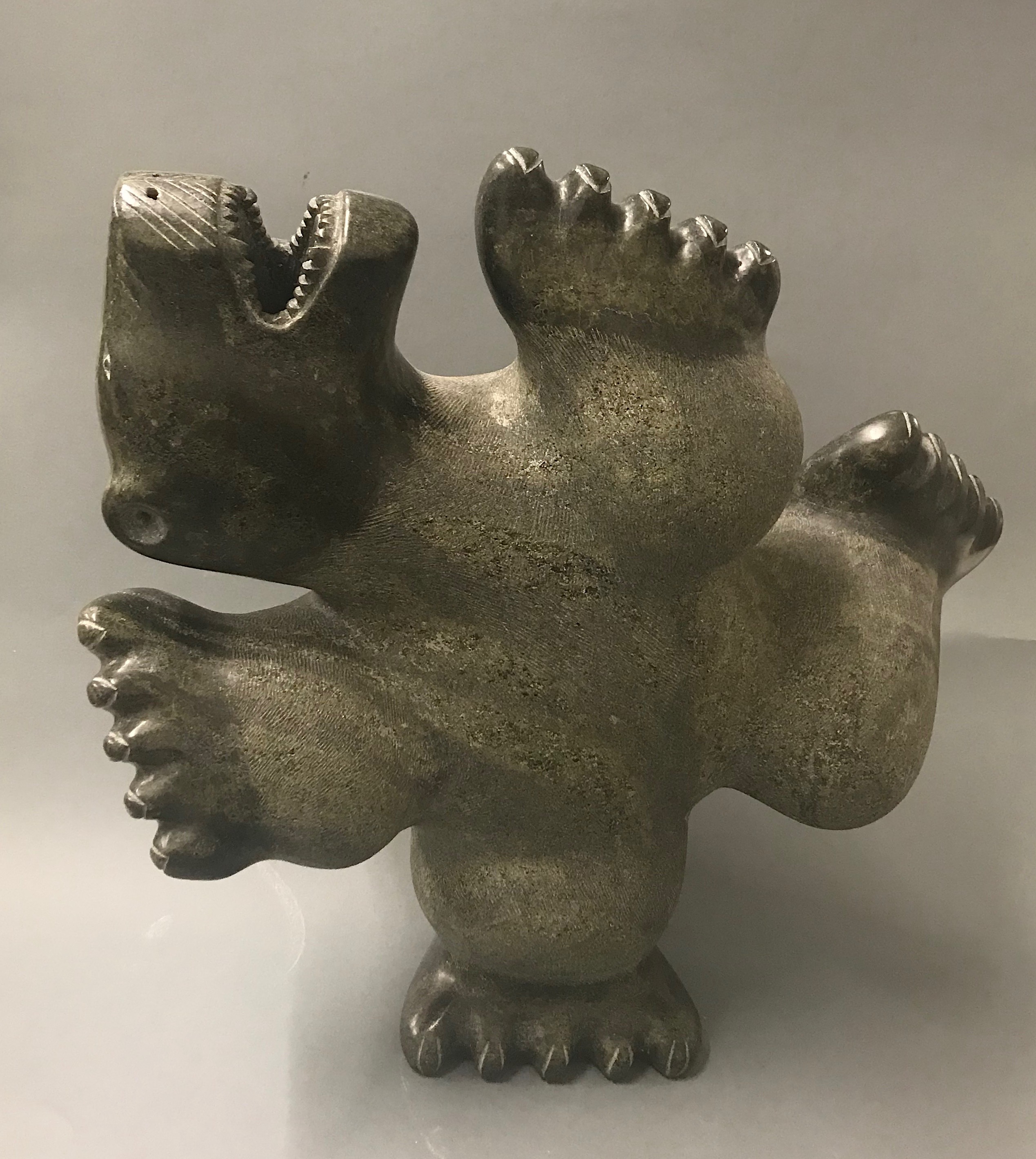Museum of Contemporary Circumpolar Art (MCCA)
ObjectDancing Bear (Sculpture )
Nalenik began carving in the mid 1960s at the ge of fifteen, and likely created small ivories for the first few years. By th elate 1960s he was carving large stone sculptures, mostly depictions of bears and other wildlife. Nalenik and his family moved to Kimmirut only in the late 1970s, preferring to live on the land until that time. His attitude to carvng was decidely old school as wee; he preferred using simple home-made carving tools. His dedication to his art is summed up nicelyhere: "I admire and like to watch other carvers working. Thes inspire me work hust as hard as they are, which helps me to keep doing my best, especially during long, hard cold winters when I have to work outside." (Guide to Kimmirut rtists: 2005-2006, Kyra Vladykov Fischer, artist interview with Rob Jaffray)
Nalenik is best known and celebrated for his monumental depictions of bears that he began to carve in the 1980s.,three of which were exhibited in the international Masters of the Arctic exhibition in 1989. These works are truly dstinct for their textural effects. The bears' matte, delicately textured torsos and limbs contrast strongly with their highly püolished heads and paws; it's a clever intervention that makes Nalenik's bears really stand out.
The bear is large and massively heavy, but visually the work is broken up into smaller rhythmic units because of the textual changes, and our eyes are also drawn around the work because of the lovely sinuous outline.
Nalenik's treatment of the smaller details such as the ber's claws, creased snout and [eye lashes ]are also. highly distinctive.
First Arts catalogue, December 2022 #152
Accession
2011.06
Object Type
ᓴᓇᙳᐊᕐᓂᖅ
Description
Dancing Bear
Production Year
2001
Production Location
ᑭᒻᒥᕈᑦ
Materials
Steatite
Dimensions
H42 x W45 x L18 cm
Provenance
S. Sadowski
Exhibitions



